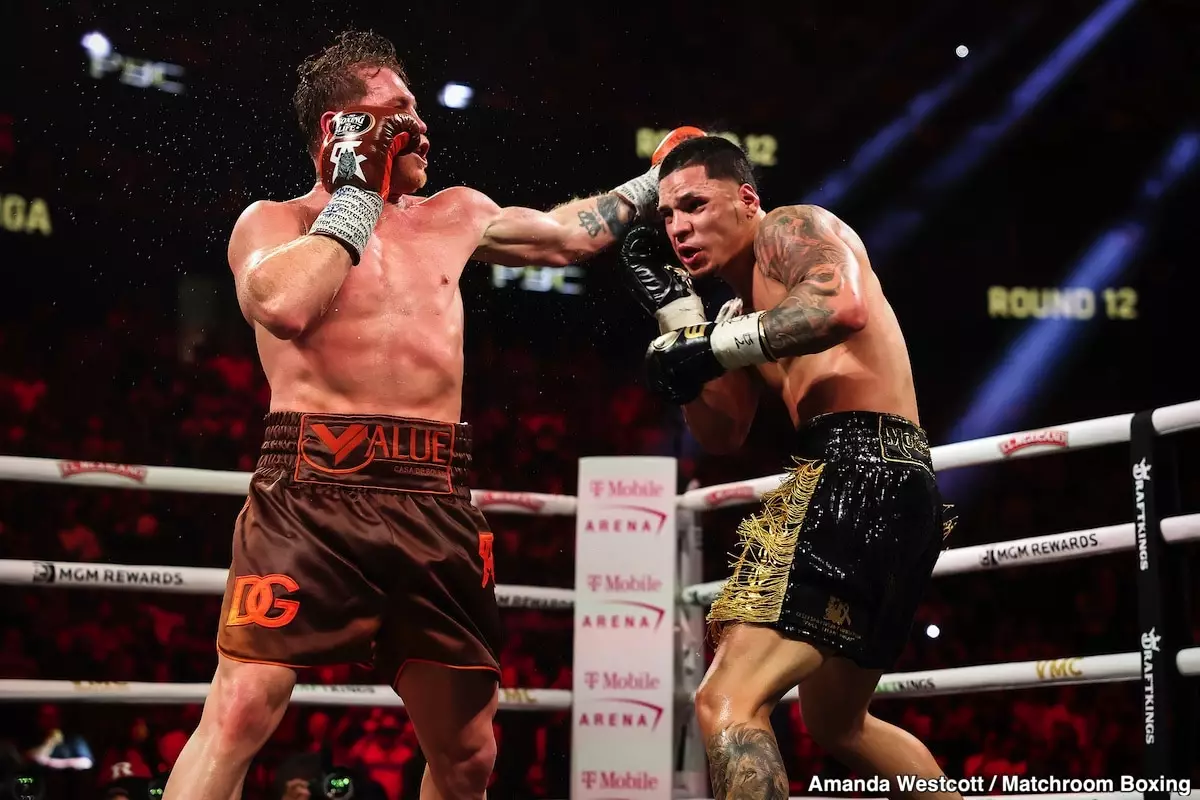Edgar Berlanga, a rising star in the boxing world, has recently declared his intention to shed weight for a potential showdown with Gervonta Davis. Berlanga’s goal is to drop down to a 150-pound catchweight by 2025, utilizing a fasting diet reminiscent of the rapper 50 Cent’s weight loss methods. At first glance, this ambitious plan seems feasible for the 27-year-old from Brooklyn, especially as he could target eliminating significant water weight. However, the feasibility of such a drastic cut raises several questions about the impact on his performance and overall health in the long run.
Berlanga’s assertion that he can comfortably drop 40 pounds is laden with implications that shouldn’t be overlooked. While he faces the risk of being rehydrated to a staggering 170+ pounds—far exceeding his opponents on fight night—this could backfire if not managed wisely. Historical precedent suggests that fighters who struggle with weight cuts often face physical drawbacks, affecting their agility, strength, and stamina. Thus, as Berlanga ambitiously strives for this catchweight, he must balance the risks of weight loss against the potential reward of a big payday and increased visibility should the fight materialize.
In the modern boxing arena, the dynamics of fight promotions bear a striking resemblance to the world of social media influencers. Berlanga’s approach to garnering fights appears to mimic personalities like Jake Paul, who have leveraged their charisma rather than a traditional path of merit. Berlanga’s route to a title shot against Canelo Alvarez highlights a troubling trend where the quality of opponents like Padraig McCrory and Steve Rolls raises eyebrows. Critics argue that such an unheralded path weakens the sport’s integrity while simultaneously diluting the significance of potential mega-fights with established champions like Davis.
Despite Berlanga’s hunger for marquee matchups, his marketability remains an obstacle. Unlike Ryan Garcia, who boasts a massive social media following, Berlanga’s popularity seems restricted to select neighborhoods in New York City. The loss to Canelo Alvarez has also likely curtailed his appeal, making it crucial for him to reinvigorate fan interest. To become a desired opponent for Davis, Berlanga must not only showcase better performances in the ring but also engage with fans through relatable branding, building a larger, more enthusiastic following.
In this precarious landscape, Berlanga’s appeal to Davis encapsulates the complexities surrounding modern boxing. While the ambition is laudable, the execution and public perception pose hurdles. Berlanga’s outlook on cutting weight through a fasting diet may be indicative of his desire for reinvention; however, only time will reveal whether this approach leads to a successful career revival or merely adds to the noise of a competitive sport increasingly driven by popularity rather than prowess. As boxing fans eagerly await the unfolding narrative, the question remains: will Berlanga rise to the occasion, or is this simply another fleeting ambition in the unpredictable sphere of professional boxing?

